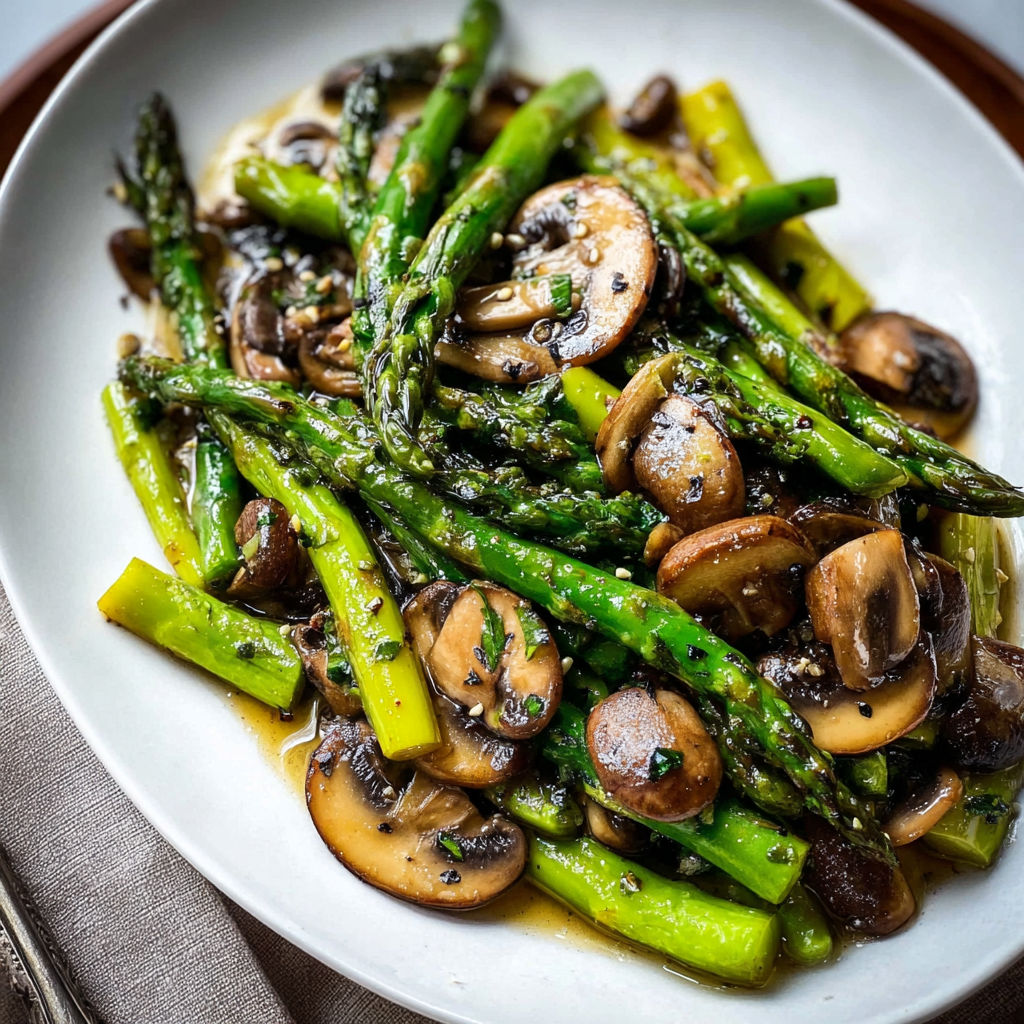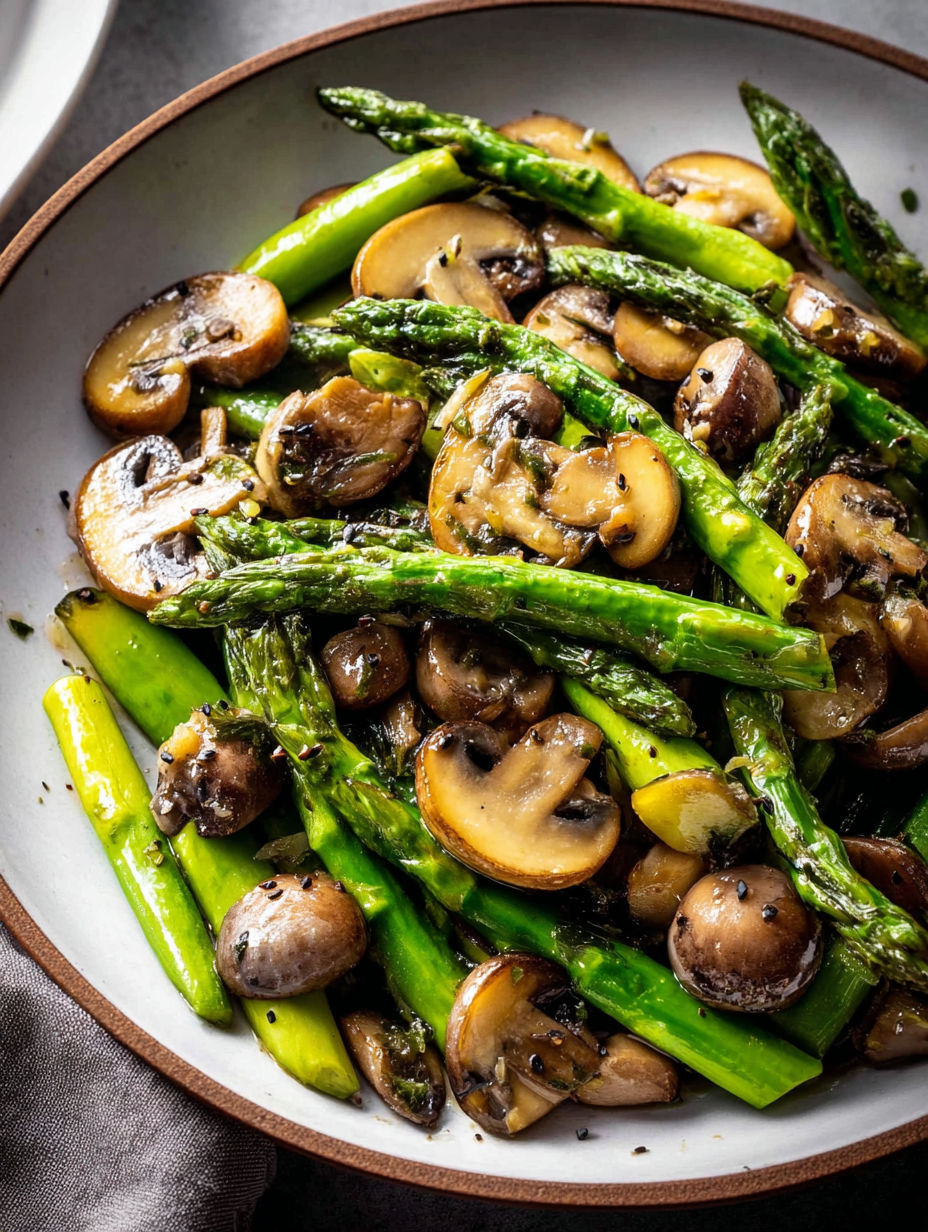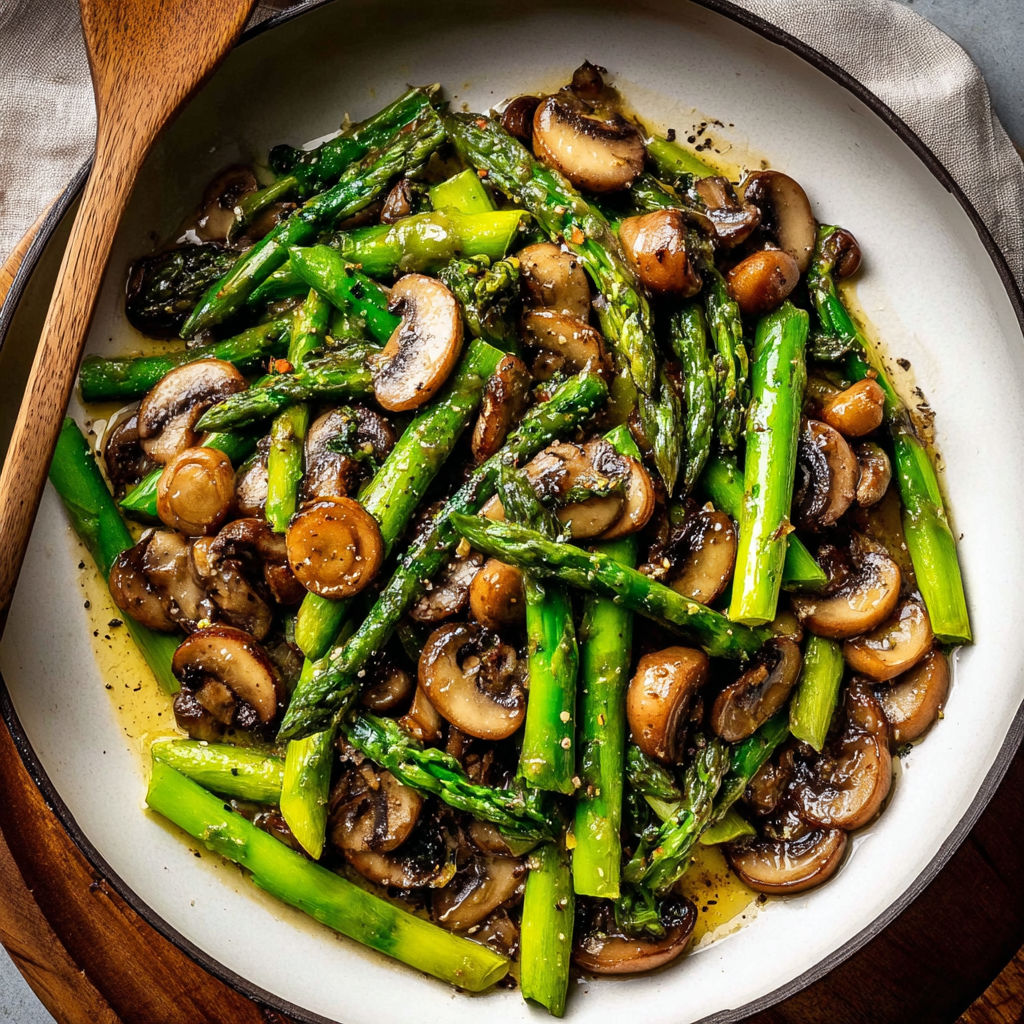 Pin
Pin
This veggie side dish transforms two humble ingredients into a restaurant-worthy accompaniment in just minutes. The natural sweetness of asparagus pairs perfectly with earthy mushrooms, creating a versatile side that elevates any main course without overshadowing it.
I discovered this recipe years ago when looking for a quick side dish that would impress dinner guests without keeping me in the kitchen. Now it's my go to solution whenever I need a vegetable that both adults and kids will enjoy.
Ingredients
- Vegetable oil provides the base for sautéing without overwhelming the delicate flavors of the vegetables. Choose olive oil for a more pronounced flavor or avocado oil for a neutral taste.
- Garlic adds aromatic depth that infuses the entire dish. Fresh cloves deliver superior flavor compared to pre minced options.
- Asparagus delivers a tender yet slightly crisp texture. Look for bunches with tight closed tips and stalks that aren't too woody at the base.
- Button or cremini mushrooms contribute earthiness and meaty texture. Select firm mushrooms with unblemished caps for the best flavor and appearance.
- Kosher salt enhances the natural flavors of both vegetables. The larger crystals allow for better control when seasoning.
- Black pepper adds a subtle heat that complements the earthy tones. Freshly ground delivers the most vibrant flavor.
How To Make Sauteed Asparagus and Mushrooms
- Heat the skillet
- Begin by heating your oil in a large skillet over medium heat. Allow the pan to reach temperature before adding garlic to ensure proper sautéing without burning. A 12 inch skillet gives vegetables enough room to cook evenly without crowding.
- Sauté the garlic
- Add minced garlic to the hot oil and cook for exactly one minute until fragrant. Watch carefully as garlic burns quickly and will impart bitterness to the entire dish. Stir constantly to distribute the garlic evenly in the oil.
- Cook the vegetables
- Add both asparagus and mushrooms to the skillet simultaneously. The key is stirring occasionally not constantly to allow vegetables to develop some color. The mushrooms will initially absorb the oil then release their flavorful juices which the asparagus will then absorb.
- Season and serve
- Finish with salt and pepper just before removing from heat. This timing allows the seasonings to adhere to the vegetables while maintaining their brightness. Serve immediately while the vegetables are hot and at their peak texture.
The mushrooms are truly the secret star in this recipe. While many people focus on the asparagus I find the earthy richness that mushrooms contribute creates a much more complex flavor profile. My husband who typically avoids mushrooms always makes an exception for this dish which speaks to how well the flavors complement each other.
Perfect Pairings
This sauteed vegetable medley pairs beautifully with protein forward main courses. Try serving alongside grilled salmon, roast chicken, or a perfectly seared steak. The savory notes from the mushrooms complement the richness of meats while the asparagus provides a refreshing contrast. For a complete vegetarian meal, serve atop creamy polenta or alongside wild rice.

Storage and Reheating
Store leftover sauteed asparagus and mushrooms in an airtight container in the refrigerator for up to three days. The vegetables will release additional moisture during storage which actually helps maintain their tenderness. To reheat, warm gently in a skillet over medium low heat rather than microwaving to preserve texture. These vegetables are also delicious cold and make an excellent addition to grain bowls or salads the next day.
Simple Variations
This recipe serves as a wonderful base for countless variations. Add a sprinkle of red pepper flakes for heat, a splash of balsamic vinegar for sweetness, or toasted pine nuts for crunch. For an Asian inspired version, substitute sesame oil and finish with a drizzle of soy sauce and sesame seeds. During summer months, add halved cherry tomatoes in the last minute of cooking for a burst of color and freshness.

Recipe FAQs
- → Can I use different types of mushrooms?
Absolutely! While button or cremini mushrooms are recommended, you can substitute with shiitake, portobello, or oyster mushrooms for different flavors and textures. Each variety will bring its own unique earthiness to the dish.
- → How do I know when asparagus is cooked properly?
Properly cooked asparagus should be bright green and tender-crisp. You should be able to pierce it with a fork, but it should still have a slight bite to it. Overcooking will result in mushy asparagus and dull color.
- → What's the best way to remove woody asparagus ends?
The simplest method is to hold each asparagus spear with both hands and gently bend it - it will naturally snap at the point where the tough, woody part ends. Alternatively, you can cut about 1-2 inches from the bottom ends.
- → Can I prepare this dish ahead of time?
This dish is best enjoyed fresh, as reheating can make the vegetables soggy. However, you can prep ingredients by washing and cutting the asparagus and mushrooms in advance, storing them separately in the refrigerator until ready to cook.
- → What can I serve with sauteed asparagus and mushrooms?
This versatile side dish pairs beautifully with grilled or roasted proteins like chicken, steak, or fish. It also makes a wonderful addition to pasta dishes, risotto, or as a topping for crostini. For a complete vegetarian meal, serve over polenta or alongside quinoa.
- → How can I add more flavor variations?
Enhance the dish with a splash of lemon juice and zest before serving, sprinkle with Parmesan cheese, add fresh herbs like thyme or parsley, or include a dash of red pepper flakes for heat. A drizzle of balsamic glaze also works wonderfully.
